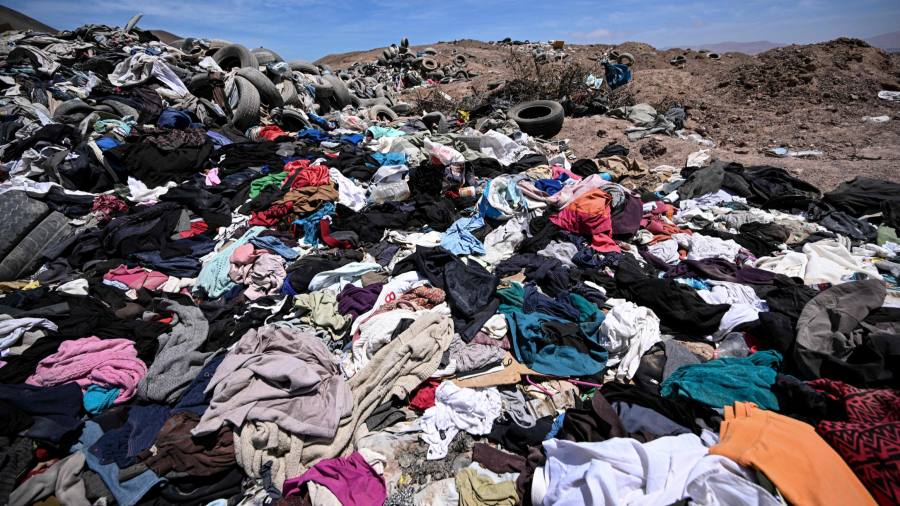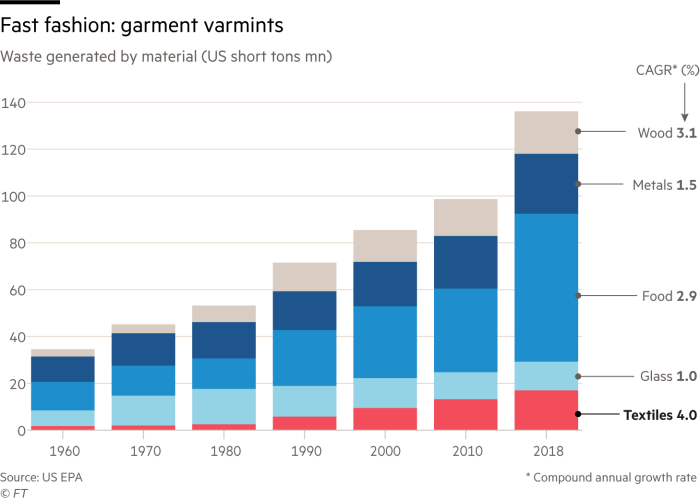
The stylishly minded are advised to look in the mirror before leaving the house and remove one item. In the world of disposable fast fashion, it is likely to end up in a landfill site.
Last month, fashion representatives met at the UN Climate Conference to discuss waste reduction. The volume of garments created makes change difficult. A report from the US National Institute of Standards and Technology notes that fashion brands produce twice as much as they did 20 years ago. Much of that is comprised of cheap garments in the near $100bn fast fashion market.
About 50bn items of clothing are estimated to be thrown away within one year of production. Recycling is labour-intensive. Buttons and zips must be removed and fibres separated. It is far easier to use new plastics.

The result is vast piles of unwanted polyester. In the US, the volume of waste generated by textiles has grown almost 10-fold between 1960 and 2018 (the most recent year of complete data available), according to the Environmental Protection Agency. This is not simply the result of population growth. Per capita, textile waste has grown by more than 50 per cent.
Two-thirds of this will go to landfills, where it will sit for decades. Wool decomposes in a matter of months, putting nutrients back into the earth. Polyester is not biodegradable.
Fast fashion brands promise change. London-listed Boohoo boasts that it is using more recycled materials. Yet analysis of 10,000 fast fashion items by the Royal Society for Arts, Manufactures and Commerce last year found that the majority were still made from new plastics. Consumer spending restraints and rising labour costs suggest sustainability will not be a priority in 2023. McKinsey estimates that fashion sales could fall up to 2 per cent next year.
Industry solutions include lab-grown fibres. Reduced consumption would have a bigger impact. Instead of taking one item of clothing off before leaving the house, the solution is not to buy it in the first place.
Our popular newsletter for premium subscribers is published twice weekly. On Wednesday we analyse a hot topic from a world financial centre. On Friday we dissect the week’s big themes. Please sign up here.